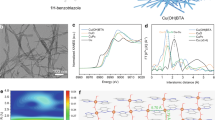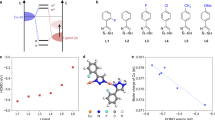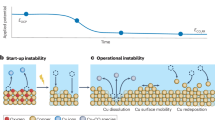Abstract
Reactions of t-butyl 2-bromo-4,4,4-trichloro-2-methylbutyrate (1) in the presence of copper powder afforded predominantly four types of products via a homolytic cleavage of the carbon–bromine bond. The effects of the following factors on the conversion of the substrate and composition of products were studied: activity of copper powder, contact time, concentration of the substrate, temperature of reaction, kind of solvent, and amount of copper powder added. The catalytic reaction of 1 in methanol proceeded with the formation of copper(I) bromide, whereas that in an aprotic polar solvent was exclusively accompanied by the formation of copper(II) bromide.
Similar content being viewed by others
Log in or create a free account to read this content
Gain free access to this article, as well as selected content from this journal and more on nature.com
or
References
T. Kimura and M. Hamashima, Polym. J., 21, 91 (1989).
T. Kimura, M. Kamewada, J. Kinoshita, and M. Minabe, Polym. J., 26, 1047 (1994).
T. Kimura, K. Nagoune, and M. Minabe, Chem. Express, 8, 717 (1993).
P. E. Fanta, Chem. Rev., 64, 613 (1964).
T. Kimura, H. Tasaka, and M. Hamashima, Polym. J., 19, 305 (1987).
R. Tsuchida, H. Yoneda, and S. Kida, “Mukibushitsuseiho,” Nikkan Kogyo Sinbunsha, Tokyo, 1962, p 143.
Author information
Authors and Affiliations
Rights and permissions
About this article
Cite this article
Kimura, T., Ohkami, H., Tokunaga, E. et al. Reactivity of Telomers IV. Catalytic Reaction of t-Butyl 2-Bromo-4,4,4-trichloro-2-methylbutyrate with Copper Powder. Polym J 27, 1194–1201 (1995). https://doi.org/10.1295/polymj.27.1194
Issue date:
DOI: https://doi.org/10.1295/polymj.27.1194



